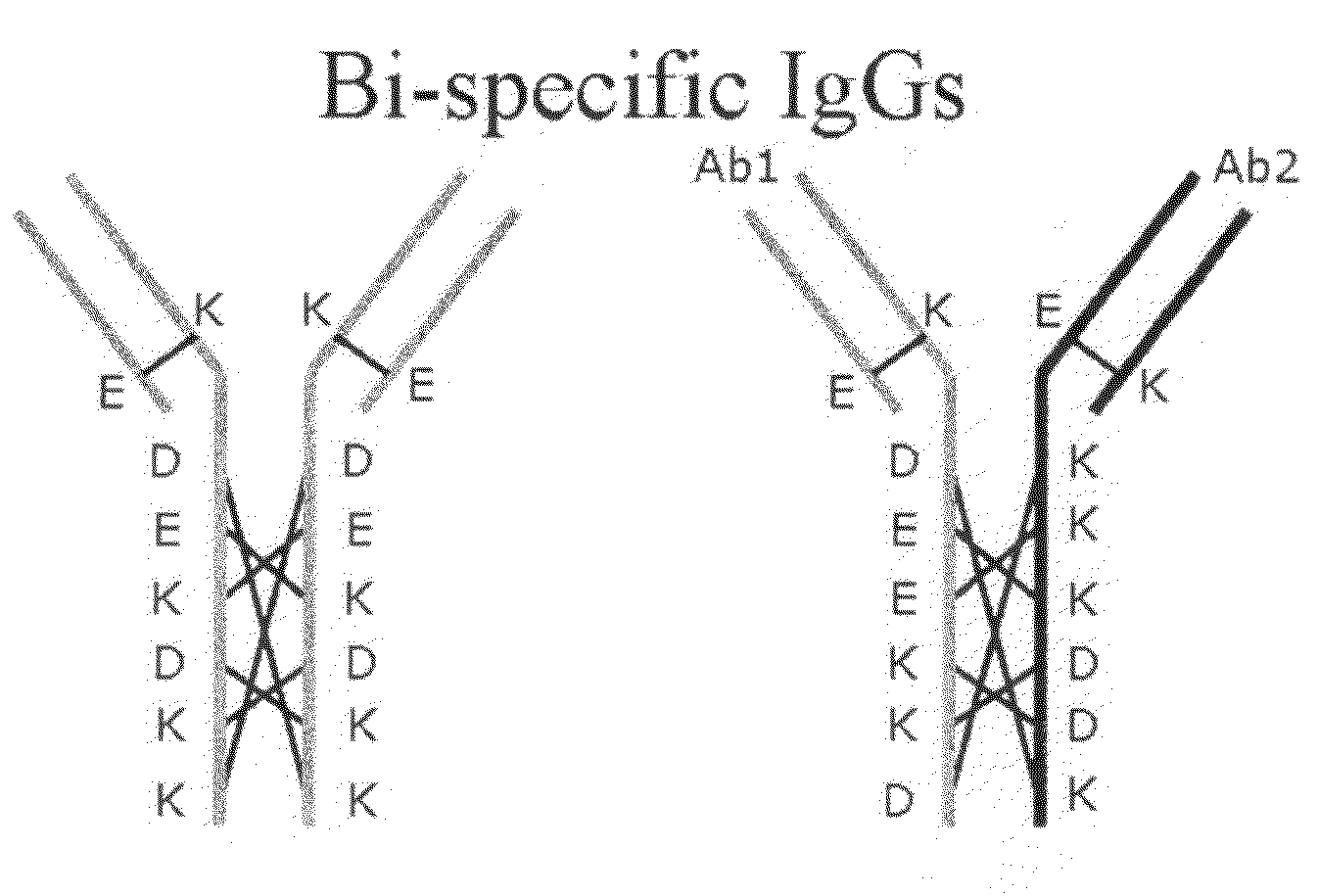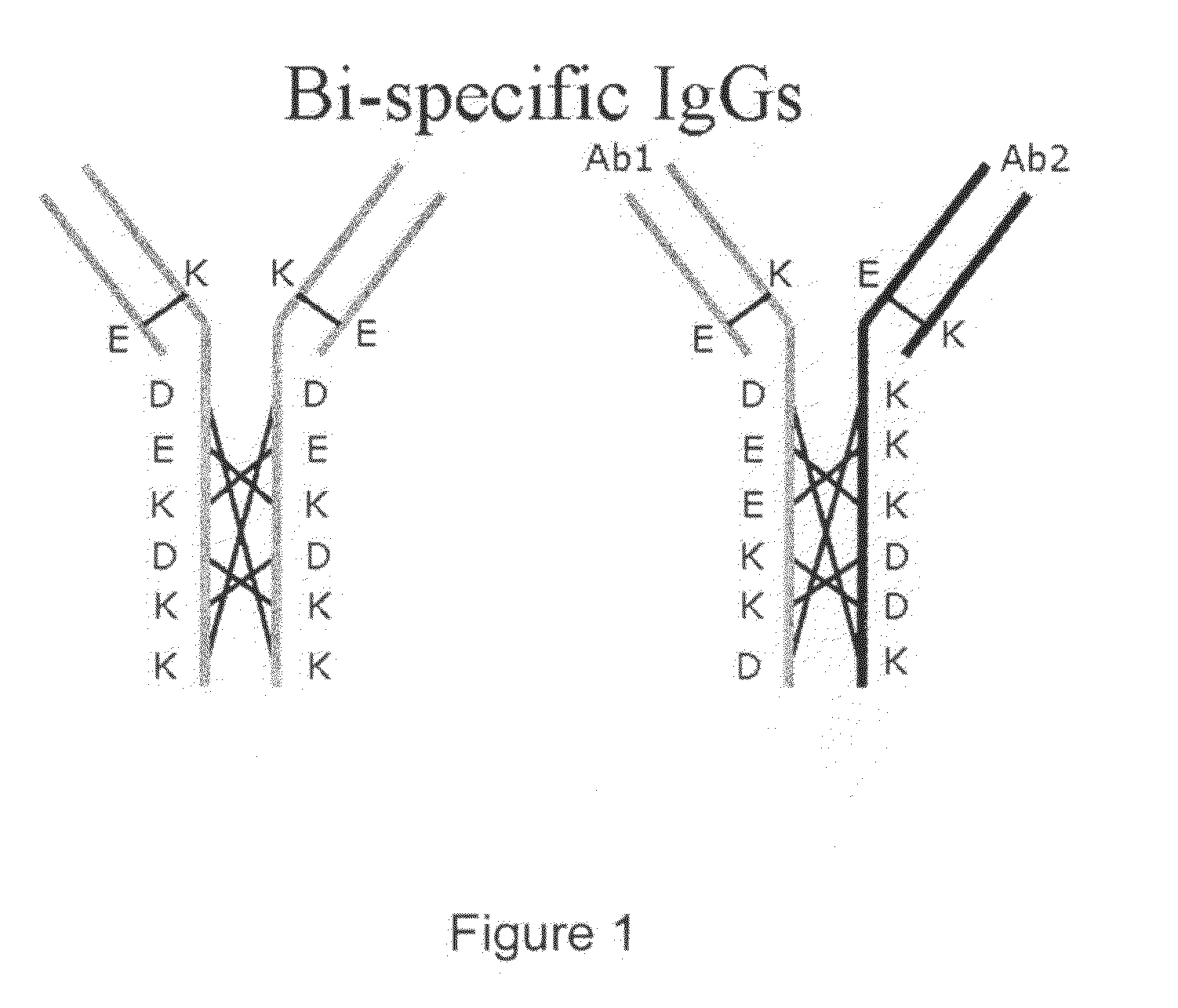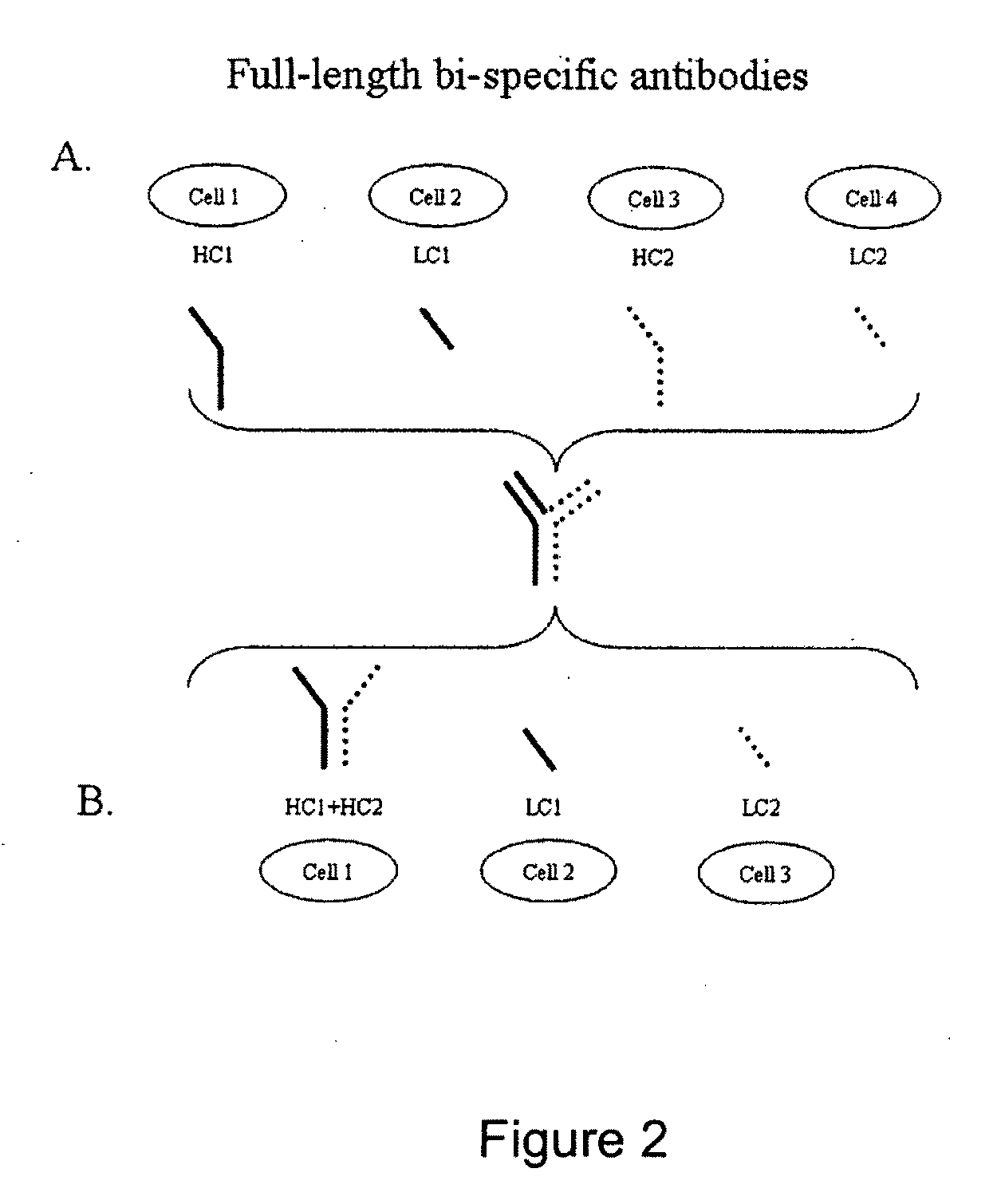Production of Bispecific Antibodies
- Summary
- Abstract
- Description
- Claims
- Application Information
AI Technical Summary
Benefits of technology
Problems solved by technology
Method used
Image
Examples
example 1
Identification of Amino Acid Residues Responsible for Ionic Interactions in Immunoglobulins
[0100]References to heavy chain constant region position numbers here specifically indicate the position of the wild-type constant region sequence starting from the beginning (N-terminus) of CH1 (according to UNIPROT-id:IGHG1_HUMAN). For constant light chain positions, numbering is according to Uniprot-id:KAC_HUMAN. The amino acids responsible for the ionic interactions in human IgG1s were identified using an analysis of X-ray structures available for the CH3-CH3 domain-domain interactions of both the GM and KM allotypes, and X-ray structures available for CH1-CKappa and CH1-CLambda interactions.
[0101]Specifically, the following KM X-ray structures were analysed: 1 HZH, 1ZA6, 10QX, 10QO, 1L6X; the following GM X-ray structures were analysed: 1T89, 1T83, 1IIX, 1H3X; the following CH1-Ckappa X-ray structures were analysed: 1TZG, 1HZH; and the following CH1-Clambda X-ray structure was analysed: 2...
example 2
Modification of Amino Acids in First and Second LCHCPs to Promote Heterodimer (BsAb) Formation
[0121]As briefly described already, amino acid residues involved in the above-described interactions were subjected to substitutions in two LCHCPs (from different antibodies having different specificities) in order to increase the energy of (required for) homodimeric interactions and thereby favor heterodimeric interactions (and thus, formation of a BsAb). The same principle can be applied for heavy-light chain interactions.
[0122]Examples:
[0123]CH3-UnmodifiedCH3-Unmodified[0124]D239K322[0125]E240K253[0126]K292D282[0127]K322D239[0128]K253E240[0129]D282K292
[0130]Suggesting the modifications K322D, K253E, D282K in chain A and D239K, E240K, K292D in chain B leads to a CH3-Modified-ACH3-Modified-B interaction with only matching pairs[0131]D239K322[0132]E240K253[0133]K292D282[0134]D322K239[0135]E253K240[0136]K282D292
[0137]Whereas the CH3-Modified-ACH3-Modified-A interaction becomes:[0138]D239D322...
example 3
Recombinant Cloning of Two Human Antibodies Recognizing Independent Targets
[0161]An anti-human tissue factor antibody, HuTF33-F9, that immunoreacts with human tissue factor (TF) to inhibit the binding of coagulation factor VIIa (FVIIa) (described in US20050106139-A1) (herein frequently labeled “TF”) and antibody HuKIR1-7F9 that binds Killer Immunoglobulin-like Inhibitory Receptors (“KIRs”) KIR2DL1, KIR2DL2, and KIR2DL3 (described in WO2006003179-A2) (herein frequently abbreviated KIR), were used to prepare the bispecific anti-TF / anti-KIR antibodies described here. The anti-TF antibody is a fully human IgG1 antibody and the anti-KIR antibody is a fully human IgG4 antibody.
Isolation of total RNA from hybridoma cells: 4×106 hybridoma cells (HuTF-33F9) and (HuKIR1-7F9) secreting antibodies against two independent antigens were used for isolation of total RNA using RNeasy Mini Kit from Qiagen. The cells were pelleted for 5 min at 1000 rpm and disrupted by addition of 350 μl RLT buffer co...
PUM
| Property | Measurement | Unit |
|---|---|---|
| Covalent bond | aaaaa | aaaaa |
Abstract
Description
Claims
Application Information
 Login to View More
Login to View More - R&D
- Intellectual Property
- Life Sciences
- Materials
- Tech Scout
- Unparalleled Data Quality
- Higher Quality Content
- 60% Fewer Hallucinations
Browse by: Latest US Patents, China's latest patents, Technical Efficacy Thesaurus, Application Domain, Technology Topic, Popular Technical Reports.
© 2025 PatSnap. All rights reserved.Legal|Privacy policy|Modern Slavery Act Transparency Statement|Sitemap|About US| Contact US: help@patsnap.com



